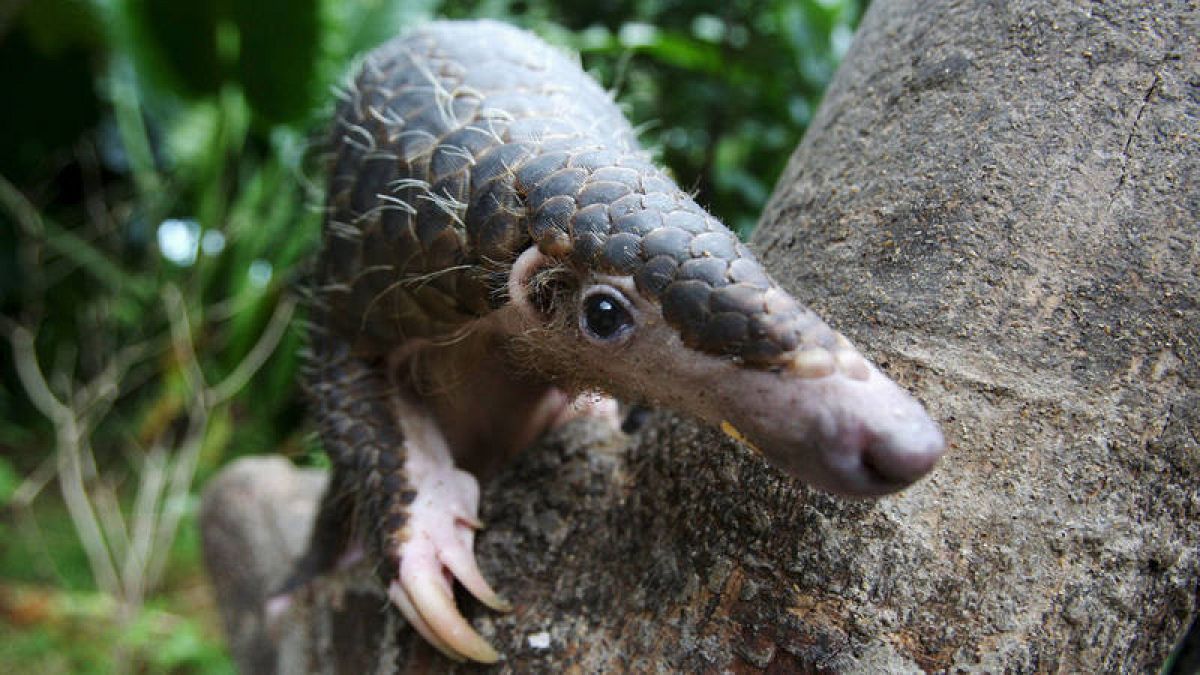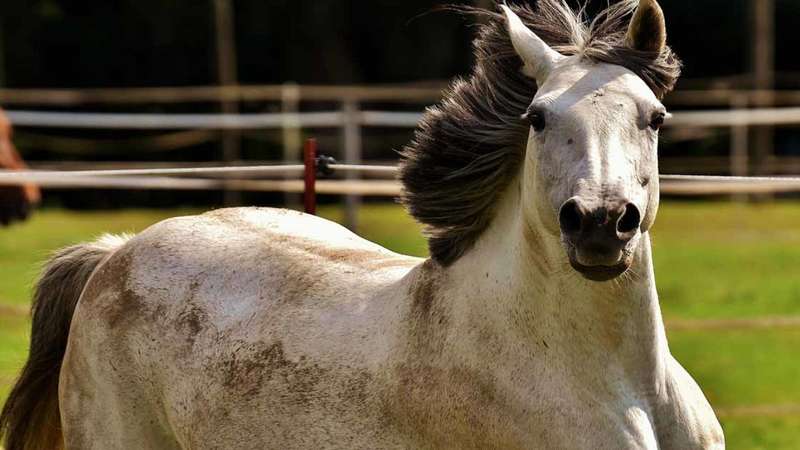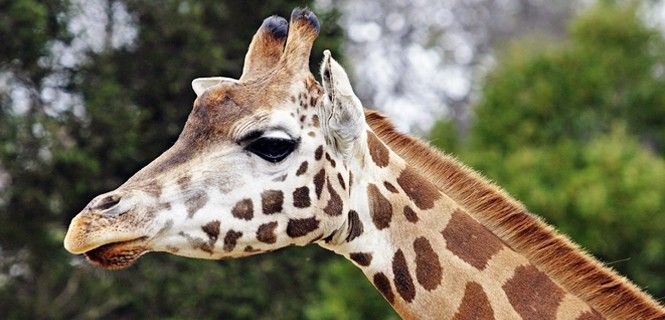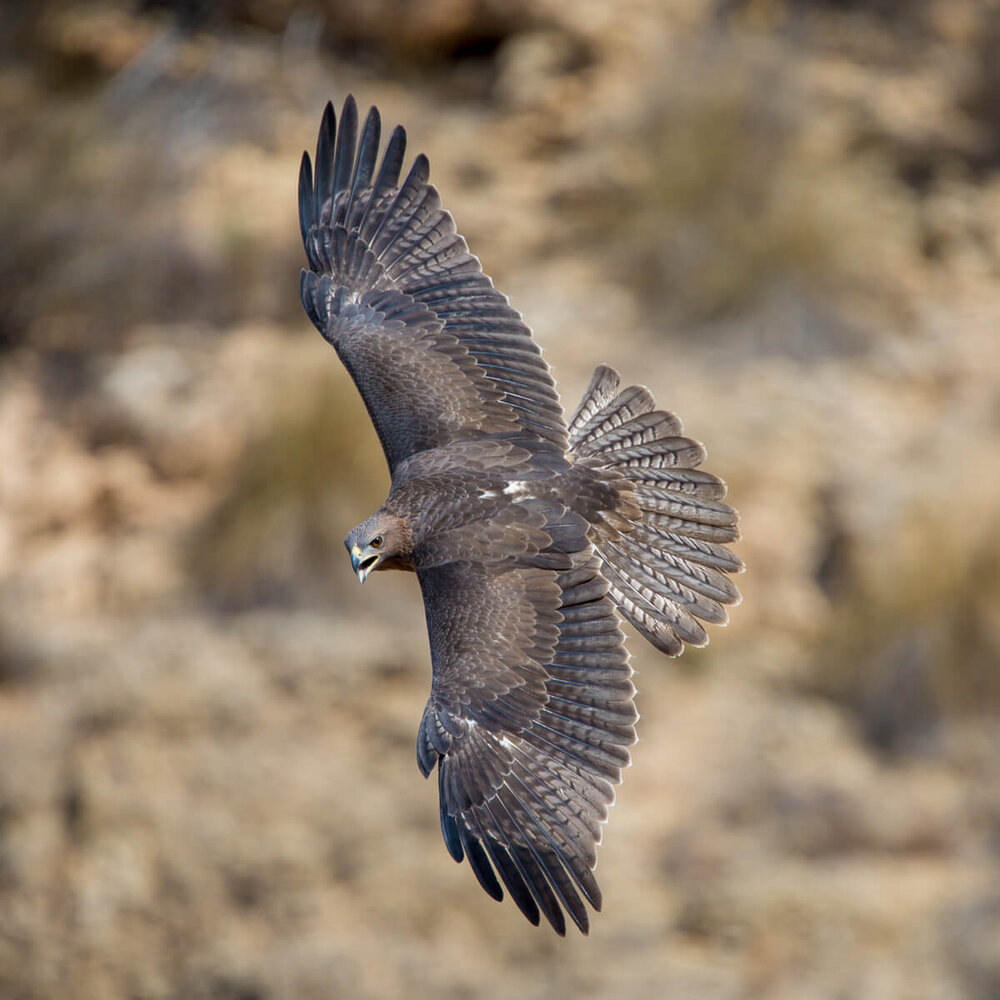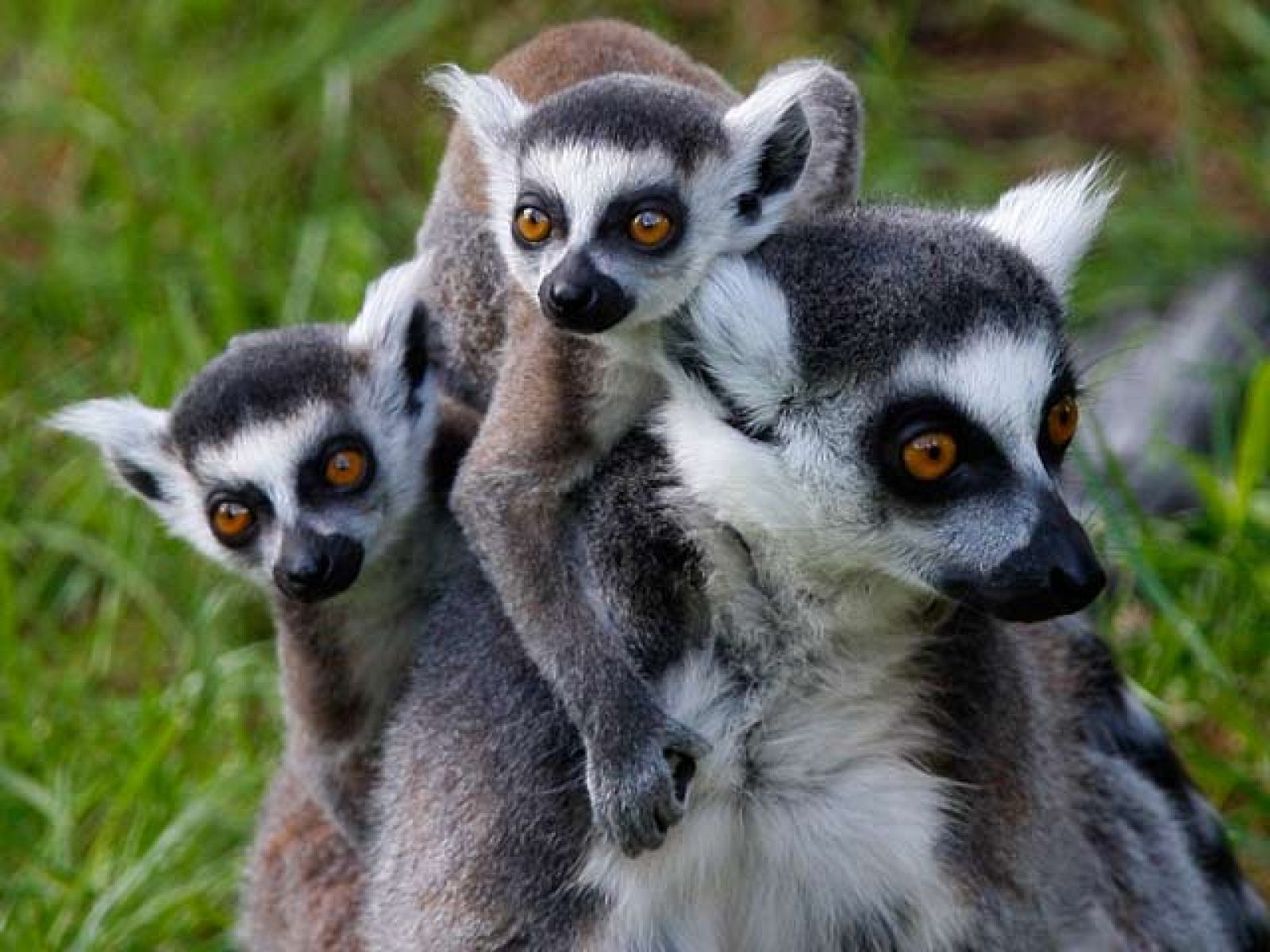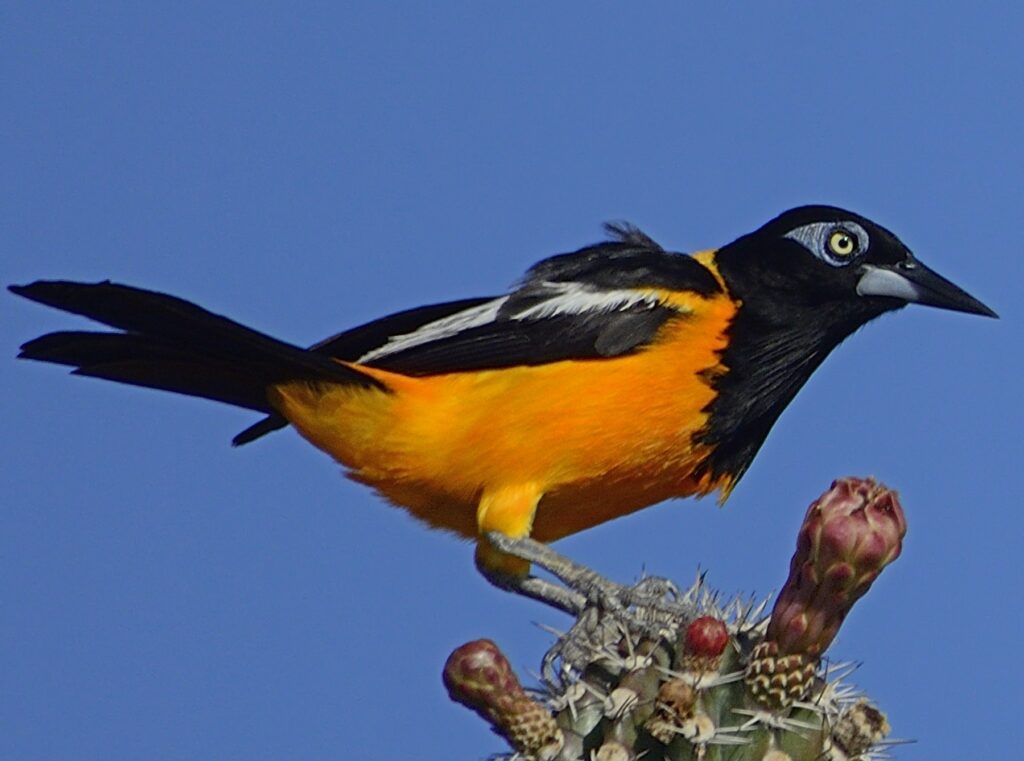The Vertebrate Animals that are part of the Vertebrata class, constitute a very wide and diversified subphylum of chordate animals in which all the animals that have a bone system with a backbone are included, we invite you to read this article so that you know a little more about they.

What are Vertebrate Animals?
As we have already said, they are the ones that have a backbone and bones, and in this genus approximately 69,276 species are classified that still exist and that have been known, as well as a large number of fossils. So the classification includes extant animals, animals that have become extinct in modern times, and animals that existed thousands of years ago.
It is interesting to observe how vertebrate animals have resorted to the adaptation of the evolutionary process to be more efficient and survive in environments that could be considered extreme and inhospitable. It has been proven that, initially, they came from a freshwater habitat, but have managed to evolve to adapt to live in the ocean and on land.
The Vertebrata
The word vertebrata, used in a broad sense, has the same meaning as the term craniata, and includes those animals classified as hagfish, which are those that do not have true vertebrae.
But if the term vertebrata is used in a restricted sense, that is, referring only to chordate animals that have vertebrae, it is necessary to exclude hagfish. Scientists who have studied the genetics of animals found that animals that are part of the vertebrata group, using the term in a restricted sense, are also paraphyletic, because animals such as lampreys, which are classified as true vertebrates.
This is so because lampreys are particularly related to hagfish rather than gnathostomes and it has been shown that they share a more recent ancestry with hagfish than gnathostomes, which is why they should be classified in the same group. called cyclostomata, which is included in the genus Vertebrata.
In fact, recent fossil traces support the need to include the hagfish within the genus of vertebrate animals, because it has been scientifically speculated that the hagfish turn out to be the descendants of vertebrate animals that did not have a jaw and that, as evolved, lost backbone
If so, lampreys would have to be declassified from the clade Cephalaspidomorphi, which is the term used to group jawless fish that are directly related to gnathostomes.
Characteristics of Vertebrate Animals
Vertebrate animals are characterized by having bilateral symmetry, having a skull as a protection measure for their brain, and a skeleton, either cartilaginous or bony, which is composed of a metamerized axial part that is the vertebral column. According to scientists, there are currently between 50 and almost 000 species of this genus.
The average vertebrate animals are characterized by having their body divided into three parts that are the trunk, the head and the tail; and the trunk is also divided into two parts, which are the thorax and the abdomen. In addition, the limbs depart from the trunk, which can be odd, as in the case of lampreys, and pairs, as occurs in the rest of the vertebrate animals.
In their embryonic phase they have a notochord that becomes the spinal column when they reach the adult phase.
Normally the head is very differentiated and in that part of the body most of the nervous and sensory organs are located together. The ease with which the cranial structure of vertebrate animals fossilizes has been essential for us to be able to understand their evolution.
In the stages of embryonic development, the tissues of the body of vertebrate animals develop gaps or gill slits, which are the ones that give rise to those that later give rise to the gills of fish and other marine animals and also to other different structures .
In the case of marine vertebrate animals, their skeleton can be made up of bones, be cartilaginous, and sometimes have an exoskeleton, which consists of skeletal skin formations.
The anatomy of vertebrate animals has the following characteristic features:
integument
The integument has a very relevant importance in the case of vertebrate animals due to the many functions it performs, and can exhibit various horn differentiations.
Scientific studies have shown that glands with secretion or excretory functions, formations of protective and sensory structures, capable of isolation from the environment and others can be distinguished in the integument.
The integument is made up of three layers: the hypodermis, the dermis, and the epidermis. In addition, the chromatophores or coloration cells are located there, so that the pigment cells that branch out through the skin are located in the integument.
Now, the skin contains two important structures, which are the epidermal and dermal:
epidermal structures
They constitute glands that receive the name of faneras and depending on the class of substances that are elaborated in them, they can be poisonous, as is the case of several reptiles, amphibians and fish; and mammary, sweat or sebaceous in mammalian animals. These appearances can be found in the tissues or in horny appendages located in the skin, such is the case of various birds, fish and reptiles.
There are also fanera that give rise to feathers and beaks, as is the case of birds, to claws and nails; mane and hooves, as occurs in some mammals, and also horns in animals such as bulls or antelopes.
dermal structures
They can be presented in many ways, among them are the scales in the fish; the bony plates that can be seen in the shells of some reptiles, which are called turtles for this reason, and the extremely rigid scales present in the skin of crocodiles; as well as the horns that we can find in ruminants.
Locomotor apparatus
The locomotor system of vertebrate animals adapted from its initial purpose, which was to provide the ability to swim, to grant the possibility of executing multiple actions, allowing complex movements to be carried out according to the circumstances that are perceived by the sensitive organs.
The fish, whose habitat continues to be the primitive environment of life, have undergone evolutionary modifications with the appearance of a pair of fins, which later, by evolutionary process, were changed into quiridia or pentadactyl locomotive limbs, that is, they have five fingers , when they began to change their habitat towards the land.
Later they became specialized adaptations, as is the case with the grasping hands of primates, the claws of felines, or the wings that allow birds to sustain themselves in the air.
Circulatory system
In vertebrate animals, the circulatory system is hidden, and through it oxygen and nutrients are transported to different organs, cells and tissues, as occurs with red blood cells that transport oxygen through hemoglobin. It is made up of a blood system and a lymphatic system.
The circulatory system has as its main piece a heart structured by chambers, atrioles, arteries, venules, veins and capillaries. In the case of fish there is a systemic and a branchial circuit.
In many terrestrial vertebrate animals, their circulatory system is double, because it normally has a type of general or major circulation, and a type of pulmonary or minor circulation, which means that venous and arterial blood never mix.
In the case of fish, the heart is made up of two chambers, a ventricle and an atrium; in the case of amphibians and reptiles it has two atria and one ventricle. With birds and mammals, the heart is four-chambered, because it consists of two ventricles and two atria, supplemented by a series of heart valves.
Additionally, vertebrate animals have a lymphatic system, whose function is to collect interstitial fluid.
Respiratory system
Regarding the respiratory system of vertebrate animals, in aquatic animals it is of the gill type, as is the case with cyclostomes, fish and amphibian larvae; while in terrestrial animals the apparatus is of the pulmonary type; In addition, in the case of some aquatic animals and also amphibians, they can have two kinds of breathing, which are pulmonary and through the skin.
The gills constitute a threadlike organ or appendix, that is, in the form of vascularized sheets, and can be internal or external, depending on where they are located in the animal's body.
Their function is respiratory, and they are responsible for exchanging gases with the aquatic environment. The gills have as a common characteristic a large surface in contact with the habitat, and in these structures the blood supply is highly developed, more than in other places of the body.
The respiratory apparatus of birds is highly efficient; It supplies the oxygen that is required to produce the energy that your body requires to fuel the effort that is made during the course of the flight. Its system is bronchial and is linked to air sacs, called lungs; The lungs are made up of lobules and alveoli.
Nervous system
The nervous system of vertebrates is composed of a central nervous system, which is made up of the brain and a spinal cord; and the peripheral nervous system, made up of numerous ganglia and nerves of the spinal and spinal type.
There is also an autonomic nervous system that controls the viscera, called the sympathetic and parasympathetic system. It is observed that the sensory organs and motor functions are highly refined and developed.
We will find that the spinal nerves are distributed at various levels of the spinal cord, connected to the different organs, glands and muscles. In tetrapods, two thickenings of the spinal cord are shown, the lumbar and cervical intumescences, due to the evolutionary adaptation of the legs.
The senses are made up of eyes, located in a lateral vision chamber, except in the case of some primates and birds, in which it is binocular; tangoreceptors, which include the tactile organs of mammals and the lateral line that captures the pressure waves of cyclostomes, fish and some aquatic amphibians.
https://www.youtube.com/watch?v=uQo9wZS2BC0
It also includes the auditory organs, which in tetrapods have an inner ear and middle ear, oval and round hole, eardrum membrane and chain of ossicles, which are responsible for transmitting the vibration of the eardrum to the snail or cochlea. The middle ear is connected to the pharynx by the Eustachian tube.
Additionally, mammalian animals are endowed with an external ear, while fish only have an internal ear.
Endocrine system
The endocrine system of vertebrate animals is highly developed and perfected due to the adaptations produced by the evolutionary process; Through the use of hormones, many functions of the organism can be regulated.
This endocrine system is directed by the pituitary gland and hypothalamus, which are structures that manufacture messages by releasing biochemicals that act on the gonads, adrenal glands, pancreas, and many other organs.
Digestive system
The digestive system of vertebrate animals has taken giant steps in the evolutionary process, from the first forms of life, which fed by means of a filtering process, up to macrophagic vertebrate animals.
This has required the verification of a large number of evolutionary adaptation processes in the different structures that intervene in the digestive system, both chewing, dental, muscular, even in the case of the internal cavities themselves, even creating the enzymatic components that are required by the body to carry out the digestive process.
The digestive system of vertebrate animals is made up of an oral cavity, pharynx, esophagus, stomach, intestine and anus. All these organic structures are related to other adjoining glandular structures, such as the salivary glands, the pancreas and the liver.
With tetrapods it happens that their oral cavity is extremely complex, because inside it a group of auxiliary structures has developed, such as teeth, tongue, palate and lips.
The stomach is usually structured by three areas; In the case of animals, ruminants, whose diet, due to the adaptation they had to their habitat, consists of a herbivorous diet, they have a stomach made up of four cavities.
With birds it happens that you can see a proventriculus and a gizzard in their stomach that has the function of grinding food, and in their esophagus they have a diverticulum or crop.
The intestine is a structure that is made up of a narrow part, which is called the small intestine, and another structure that is smaller and wider, which is called the large intestine.
The small intestine is where the bile from the liver and the pancreatic juice arrive, which are the ones that carry out the proteolytic function, that is, through them the hydrolysis of proteins is carried out, and in that process the nutrients are taken , through the microvilli located in the small intestine. In the intestine, the process of absorbing water is carried out and waste or feces are generated.
At first, primitive vertebrate animals received their food through filtration systems, which were later replaced by other systems that evolved as they adapted to their new habitat.
The result of this was that structures such as the size of the pharynx in mammals and the number of gill slits in the case of fish were reduced.
With the exception of the agnathans, which are the most primitive vertebrates, the first two gill arches of the other vertebrate animals achieved a process of gradual adaptive evolution until they became the jaws, which have managed to specialize in the process of capturing the food. Thus the digestive system is complete.
Excretory system
The excretory apparatus of vertebrate animals is made up of the renal structure and the glands that excrete sweat. This is a highly specialized system, compared to that of the lower chordate animals.
Through these highly evolved structures, it is possible to filter internal fluids into the external environment of the body, while maintaining the balance of all fluids within the body and helping to regulate the body temperature of animals.
Reproduction
The form of reproduction of vertebrate animals is usually sexual. The exception is some fish that are born with the characteristic of being hermaphrodites, that is, they have male and female reproductive organs at the same time.
As we said, the general rule is that reproduction is sexual, through the intervention of two animals of the same species but of different genders, either through internal or external fertilization, both in the case of reproductive animals viviparous as in the case of oviparous breeding animals.
The case of mammalian animals is the one that has the greatest complexity, because it requires that the embryo develops inside the mother that has been fertilized, and receives food through the placenta, in those mammals that are placental, or of the marsupial, in the case of marsupial mammals.
Once the offspring of mammalian animals have been born, the supply of food is carried out through the milk secreted by the mothers through the mammary glands.
Evolutionary history
Vertebrate animals had their origin during the Cambrian era, at the beginning of the Paleozoic, which was an extraordinary era of change, at the same time that many other types of living beings also had their origin.
The oldest known vertebrate animal is Haikouichthys, whose fossil has been dated to 525 million years old. These Vertebrate animals they closely resembled the current class of hagfish, due to the fact that they lacked jaws or agnathus, and both their skeleton and their skull were of a cartilaginous type.
Another very old vertebrate animal is the Myllokunmingia, whose fossil shows that it had very similar characteristics. Both fossils were found in Chengjiang, China.
The earliest jawed fish, the gnathostomes, made their appearance in the Ordovician, and were very successful in reproducing in the Devonian epoch, which is why that period is called the age of fishes.
But also in that same period many of the ancient agnathans disappeared and the labyrinthodonts made their appearance, which were animals in a transition stage in evolution, since they were halfway between fish and amphibians.
The parents of the reptiles burst onto the earth in the next era or period, which was Carboniferous. According to the investigations carried out, it turns out that the anapsid and synapsid reptiles were the ones that abounded in the Permian period, towards the final phase of the Paleozoic, but the diapsids were the vertebrate reptiles that dominated during the Mesozoic.
The dinosaurs welcomed the birds of the Jurassic period. But the extinction of the dinosaurs at the end of the Cretaceous period favored the proliferation of mammals.
According to the results of the investigations, the mammals were the result of the adaptive evolution that was developed from the synapsid reptiles for a long time, but that had remained in a relegated plane during the Mesozoic stage.
Number of existing species
The number of species of vertebrate animals that we have described can be divided into tetrapods and fish. According to scholars, it is currently possible to describe a total of 66,178 species, but this does not mean that they are or have been the only ones that exist or will exist, because we must remember that evolution has not ended and in the course of the evolutionary process it can It may happen that new species appear in the future.
To give us an idea, there is no data on the number of estimated species of vertebrate animals that do not have jaws, but together with fish it is estimated that there are about 33.000; while among animals that have a jaw, including amphibians, reptiles, birds and mammals, it is estimated that there are some 33.178 species.
Traditional Linnaean classification
Vertebrate animals have been traditionally classified for a century into ten classes of living beings that have been grouped by scientists as follows:
Subphylum Vertebrata
Agnatha superclass (no jaws)
Class Cephalaspidomorphi
Class Hyperoartia (lamreys)
Class Myxini (hagfish)
Superclass Gnathostomata (with jaws)
Class Placodermi
Class Chondrichthyes (sharks, rays, and other cartilaginous fishes)
Class Acanthodii
Class Osteichthyes (bony fishes)
Superclass Tetrapoda (with four limbs)
Class Amphibia (amphibians)
Class Reptilia (reptiles)
Class Aves (birds)
Class Mammalia (mammals)
cladistic classification
But studies based on cladistic classification methods that were made from the 80s have given rise to a great modification in the way of classifying vertebrates. Although the scientific debate continues and the classifications made in the future cannot be considered conclusive.
Due to the aforementioned scientific change, the way of classifying vertebrate animals has changed since the first new attempts made since 1980, and although it is not a definitive classification, we are going to show the new phylogeny of the existing vertebrates according to recent genetic studies:
Vertebrata/Craniata
cyclostomata
Myxini (witch fish)
Hyperoartia (lamreys)
gnathostomata
Chondrichthyes (cartilage fish)
Teleostomy
Actinopterygii (bony ray-finned fishes)
Sarcopterygii
Actinistia (coelacanths)
rhipidistia
Dipnomorpha (lungfish)
tetrapod
Amphibia (toads, frogs, salamanders and caecilians)
amniote
synapsida
Mammalia (mammals)
Sauropsida
Lepidosauria (lizards, snakes, amphisbenids and tuatara)
Archellosauria
Testudines (turtles)
archosauria
Crocodilia (crocodiles)
Birds
We recommend these other interesting articles:
- Marine animals
- Land animals
- Farm animals


